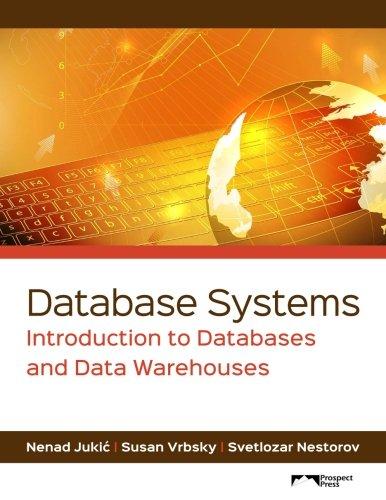Answered step by step
Verified Expert Solution
Question
1 Approved Answer
In sleep(), why is the lock released before waiter.P() and acquired after? When will conditionLock.acquire() be called? package nachos.threads; import nachos.machine.*; import java.util.LinkedList; /** *
In sleep(), why is the lock released before waiter.P() and acquired after? When will conditionLock.acquire() be called?
package nachos.threads; import nachos.machine.*; import java.util.LinkedList; /** * An implementation of condition variables built upon semaphores. * ** A condition variable is a synchronization primitive that does not have * a value (unlike a semaphore or a lock), but threads may still be queued. * *
* *
sleep(): atomically release the lock and relinkquish the CPU * until woken; then reacquire the lock. * * wake(): wake up a single thread sleeping in this condition * variable, if possible. * * wakeAll(): wake up all threads sleeping inn this condition * variable. * * * * * Every condition variable is associated with some lock. Multiple condition * variables may be associated with the same lock. All three condition variable * operations can only be used while holding the associated lock. * *
* In Nachos, condition variables are summed to obey Mesa-style * semantics. When a wake() or wakeAll() wakes up another * thread, the woken thread is simply put on the ready list, and it is the * responsibility of the woken thread to reacquire the lock (this reacquire is * taken core of in sleep()). * *
* By contrast, some implementations of condition variables obey * Hoare-style semantics, where the thread that calls wake() * gives up the lock and the CPU to the woken thread, which runs immediately * and gives the lock and CPU back to the waker when the woken thread exits the * critical section. * *
* The consequence of using Mesa-style semantics is that some other thread * can acquire the lock and change data structures, before the woken thread * gets a chance to run. The advance to Mesa-style semantics is that it is a * lot easier to implement. */ public class Condition { /** * Allocate a new condition variable. * * @param conditionLock the lock associated with this condition * variable. The current thread must hold this * lock whenever it uses sleep(), * wake(), or wakeAll(). */ public Condition(Lock conditionLock) { this.conditionLock = conditionLock; waitQueue = new LinkedList
(); } /** * Atomically release the associated lock and go to sleep on this condition * variable until another thread wakes it using wake(). The * current thread must hold the associated lock. The thread will * automatically reacquire the lock before sleep() returns. * * * This implementation uses semaphores to implement this, by allocating a * semaphore for each waiting thread. The waker will V() this * semaphore, so thre is no chance the sleeper will miss the wake-up, even * though the lock is released before caling P(). */ public void sleep() { Lib.assertTrue(conditionLock.isHeldByCurrentThread()); Semaphore waiter = new Semaphore(0); waitQueue.add(waiter); conditionLock.release(); waiter.P(); conditionLock.acquire(); } /** * Wake up at most one thread sleeping on this condition variable. The * current thread must hold the associated lock. */ public void wake() { Lib.assertTrue(conditionLock.isHeldByCurrentThread()); if (!waitQueue.isEmpty()) ((Semaphore) waitQueue.removeFirst()).V(); } /** * Wake up all threads sleeping on this condition variable. The current * thread must hold the associated lock. */ public void wakeAll() { Lib.assertTrue(conditionLock.isHeldByCurrentThread()); while (!waitQueue.isEmpty()) wake(); } private Lock conditionLock; private LinkedList
waitQueue; }
Step by Step Solution
There are 3 Steps involved in it
Step: 1

Get Instant Access to Expert-Tailored Solutions
See step-by-step solutions with expert insights and AI powered tools for academic success
Step: 2

Step: 3

Ace Your Homework with AI
Get the answers you need in no time with our AI-driven, step-by-step assistance
Get Started


